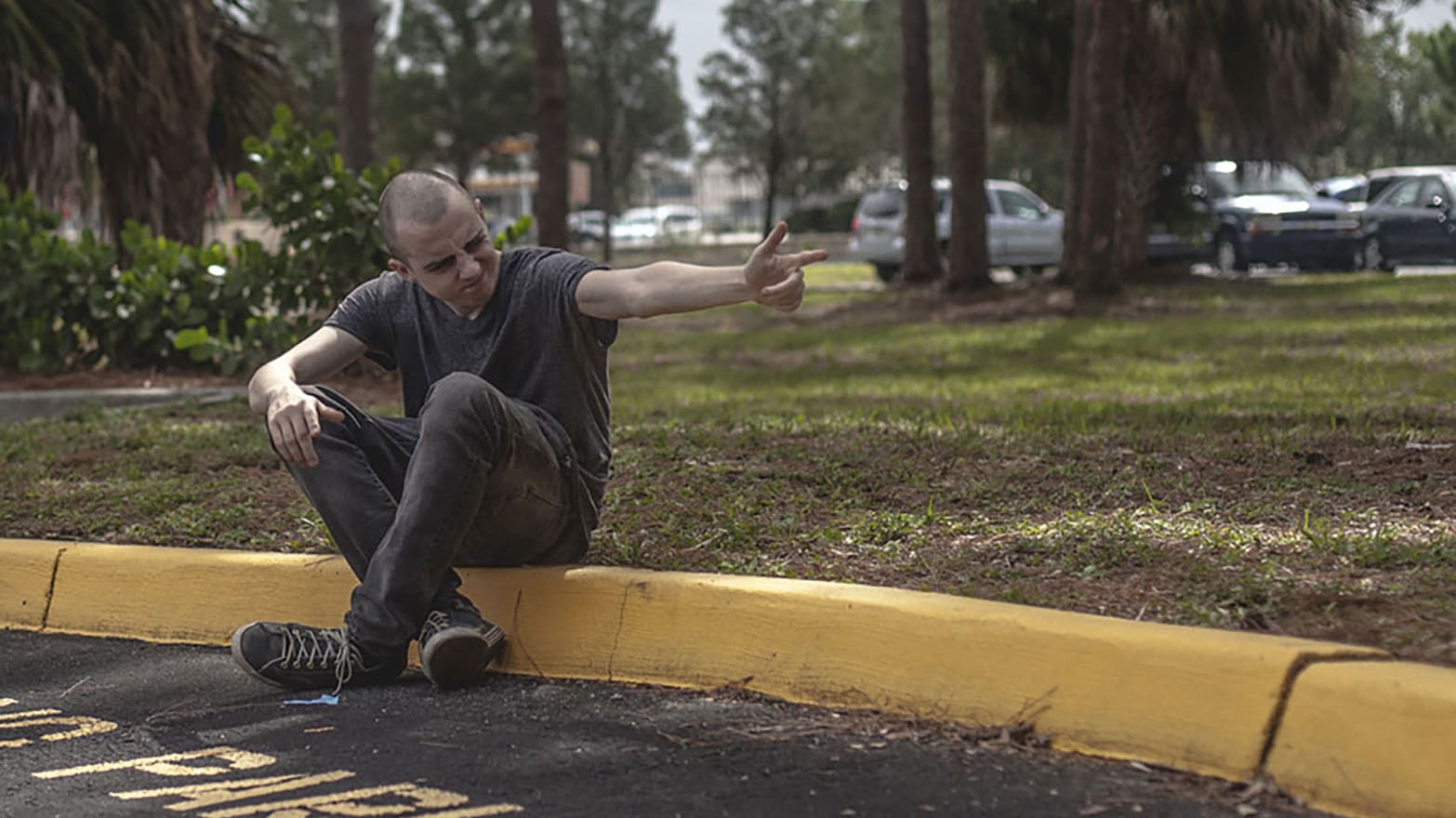Dark Night is fascinated by the phenomena of domestic mass shootings, but it’s less an act of investigation than one of imagination.
Writer/director Tim Sutton’s third feature follows in the footsteps of his prior two works, 2012’s Pavilion and 2013’s Memphis, sharing with them a desire to capture the feel of a place: its hot sticky atmosphere, its pungent smells and enveloping sounds, its air of mystery and terror, and a sense of those who inhabit it. In this case, that region is an anonymous Florida suburb of lower middle class homes populated by former soldiers, wayward teens, and single men and women proceeding through life with little direction or hope. It’s a wasteland full of guns, grief and ghosts—the last point suggested by the fact that most everyone in its story is destined for tragedy at the hands of a multiplex assassin.
Sutton’s scenario is inspired by the 2012 Aurora, Colorado, shooting by James Eagan Holmes, which took place in a crowded theater showing Christopher Nolan’s The Dark Knight Rises. Sutton overtly references that incident via a brief news report about its aftermath, as well as through both his own film’s (arguably too on-the-nose) title, and a sequence involving one male character standing in front of a mirror donning a series of horror-ish masks—including Batman’s cowl. Yet the director is barely interested in the specifics of the tragedy to which his material is ultimately leading; rather, he’s concerned with the strange environment that might breed such a crime. His drama eschews detailed cause-and-effect analysis, attempting first and foremost to situate viewers (and itself) in a particular geographic and socioeconomic frame of mind, the better to understand the origins of its madness.
If Dark Night has a spiritual predecessor, it’s Elephant, Gus Van Sant’s Columbine-inspired 2003 indie, which similarly cared less about conventional plotting or characterization than it did about taking up residence—as a detached observer—alongside its youthful subjects in the days and hours preceding calamity. However, while there may be precedent for Sutton’s approach, he conjures a unique mood of melancholy and misery with his portraits of everyday males and females trying to endure, as best they can, their go-nowhere (or stuck-in-a-rut) lives. Everyone portrayed here is coasting through their uneventful day-to-days, an idea hauntingly conveyed in close-ups of two skateboarding friends, their faces gliding in and out of the frame. And it’s also felt in a prolonged shot of a military vet methodically cleaning his rifles and shotguns, with Sutton’s camera eventually panning down those weapons’ barrels and away from its human subject.
Firearms are rampant in Dark Night, appearing in scene after scene until they become as natural, and integral, a part of this Florida terrain as its asphalt parking lots and strip malls. Be it footage of a first-person shooter video game, a long tracking shot down an indoor shooting range (in which the cacophony of gunfire slowly gives way to chilling silence), or a glimpse of a kid using a fake machine gun for an arcade game, the sights and sounds of gunfire are omnipresent. In total, they create an overarching impression of violent urges and actions as part of the fabric of this non-descript community.
A concrete answer as to why violence is endemic in an ordinary neighborhood like this remains, to Dark Night’s credit, more elusive. A support group for vets features men weeping over their trauma. Two separate characters—a man with explicit homicidal-grade anger, and a woman whose selfie addiction speaks to her low self-esteem—separately indulge in screaming-mad outbursts. Middle-schoolers sit around a living room (apparently skipping class for the day) puffing on e-cigarettes. And in the one recurring thread that’s cast as a faux-documentary versus a straightforward fictionalized drama, another maladjusted teen talks about how video games aren’t an outlet for crazy people’s worst impulses so much as a means of exploring other worlds and personas—an argument that makes one think the boy doth protest a bit too much.
Also hovering over Dark Night is the absence of male role models, either literally or, in the case of a PTSD-afflicted vet who’s incapable of properly engaging with his toddler son, figuratively. Yet again, Sutton refuses to point fingers in any one direction, instead allowing these notions to slowly materialize amidst his many dreamy panoramas of small isolated figures moving through imposing settings: a giant concrete bridge whose underside design resembles sharp teeth; a tree-lined back road shaded by giant, willowy branches; a first-person Google Earth journey along alternately barren and busy streets; and the recurring image of a multipronged parking lot street lamp whose bulbs’ buzzing—like the area’s droning insect noises—reverberates in unsettling ways.
Sutton’s aesthetics are hypnotic, exuding sadness and menace in equal measure. That’s especially true with regards to Maica Armata’s soundtrack songs, in which spartan electric guitar notes are married to her soulful, elegiac voice—which has been recorded in such a way that it echoes over the action. Intimately in tune with the director’s visual and editorial evocation of suburban ennui and disassociation, Armata’s spectral tunes further cast Dark Night as a lyrical dirge for lives that have been lost, either courtesy of the terrors of war, the loneliness and neglect of home, or some other indefinable misfortune.
If there’s a misstep here, it’s in the refusal—until the final moments—to outright demarcate the massacre’s perpetrator. That decision feels both disingenuous (since it’s obvious, early on, who’s responsible) and somewhat distasteful, given that it makes the proceedings flirt perilously close to “who’s-the-killer?” guessing-game exploitation. Still, the fact that Dark Night never quite crosses that line is thanks to Sutton’s assured grasp of his tone and purpose. Beginning and ending with different forms of light reflecting in people’s eyes, his film proves a warped stew of need, desire, fantasy and fury, painting all of its nameless characters in similar screwed-up shades as a means of illustrating the thin boundaries separating killers from victims in so many corners of our modern American landscape.

